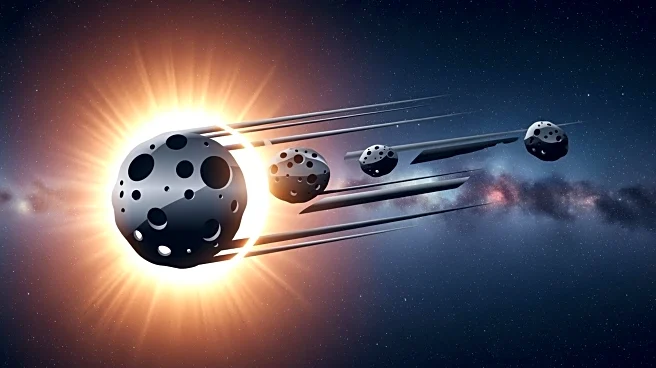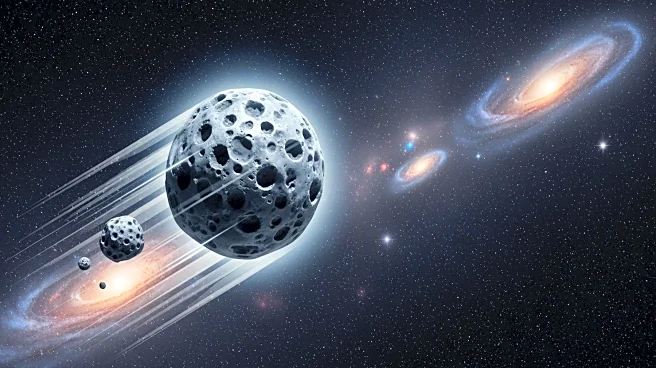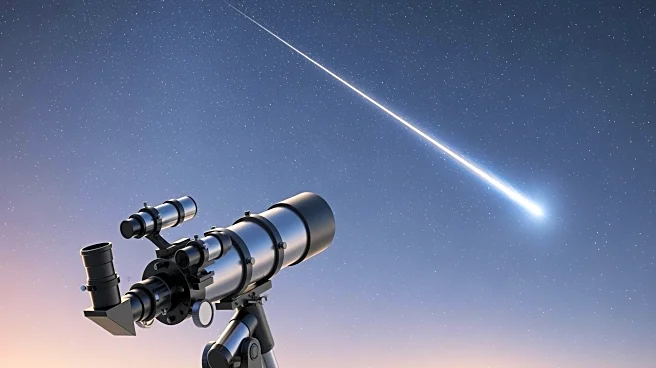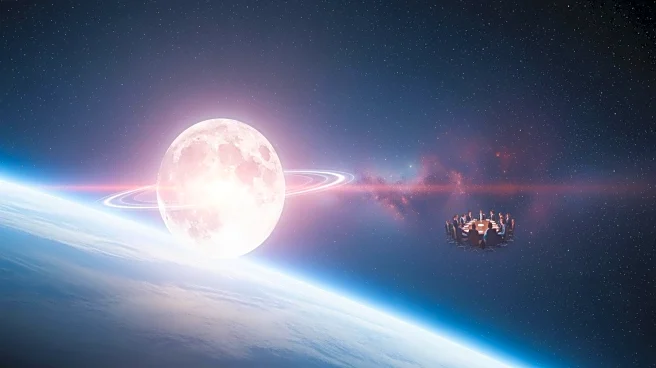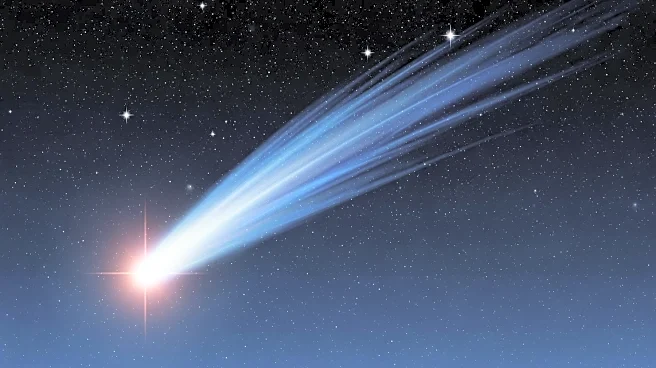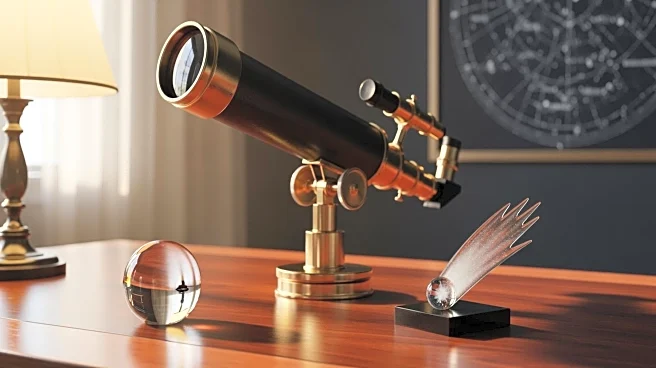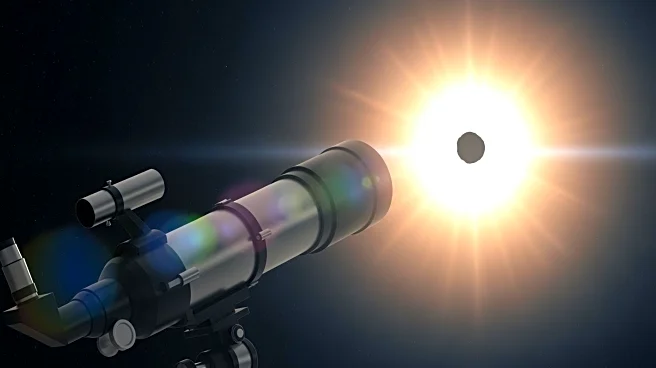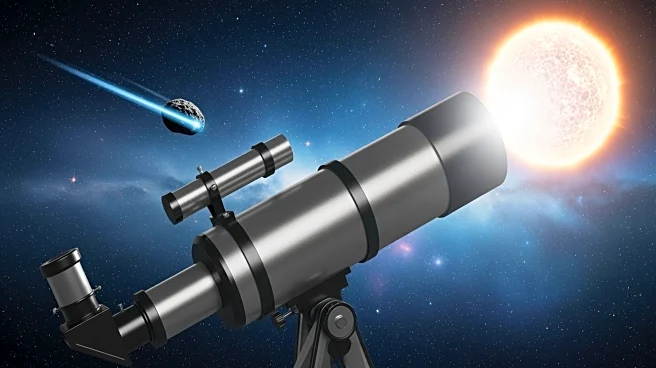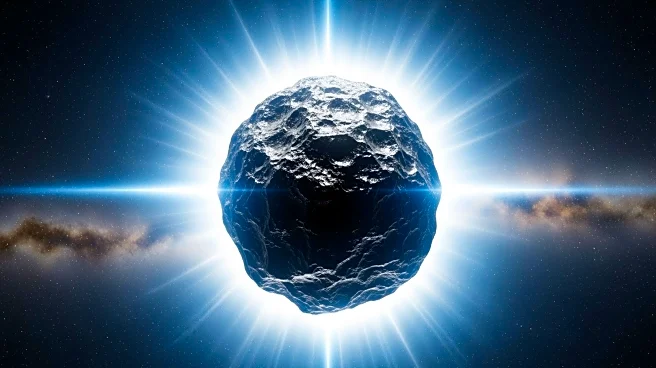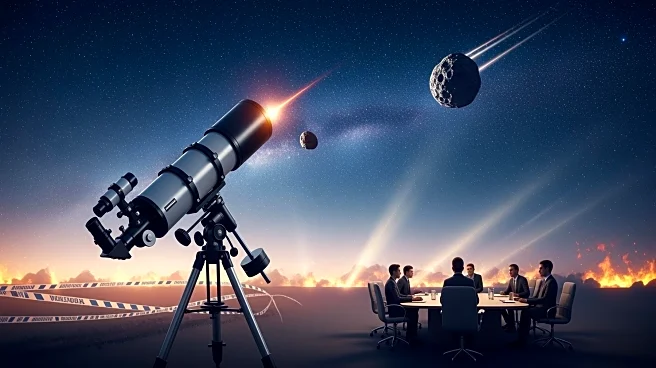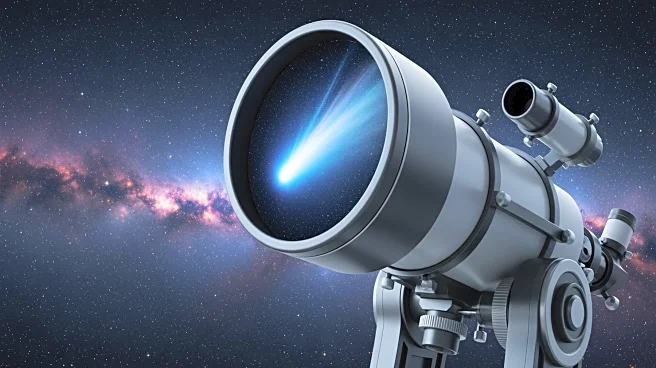What's Happening?
Astronomers have discovered a new asteroid, designated 2025 SC79, which poses a unique challenge due to its proximity to the Sun. This asteroid, observed by Scott Sheppard from Carnegie Science using the Blanco
4-meter Telescope’s Dark Energy Camera, is notable for its rapid orbit of just 128 days around the Sun, making it the second-fastest asteroid ever identified. The asteroid measures approximately 2,300 feet in diameter, nearly twice the height of the Empire State Building, and is classified as a 'planet killer' due to its size and potential impact threat. The discovery underscores the difficulty in detecting 'twilight' asteroids, which are obscured by the Sun's glare and only visible during twilight hours. This presents a significant challenge for astronomers who rely on nighttime observations to track potential threats.
Why It's Important?
The discovery of 2025 SC79 highlights a critical blind spot in asteroid detection, emphasizing the need for improved observation techniques for objects near the Sun. These 'twilight' asteroids could pose serious impact hazards if they approach Earth undetected. The ability to identify and track such asteroids is crucial for planetary defense and understanding the dynamics of our solar system. The research into these asteroids not only aims to protect Earth from potential impacts but also provides insights into the history and evolution of the solar system. The findings could lead to advancements in detection technology and strategies, potentially benefiting global efforts to mitigate asteroid threats.
What's Next?
Further observations and studies of 2025 SC79 are expected to provide valuable information about its composition and trajectory. This could enhance the understanding of similar asteroids and improve detection capabilities. Astronomers like Sheppard are likely to continue focusing on these challenging-to-detect objects, potentially leading to the development of new technologies or methods for observing asteroids in the Sun's vicinity. The ongoing research may also inform international collaboration on planetary defense strategies, ensuring preparedness for any future asteroid threats.
Beyond the Headlines
The discovery of 2025 SC79 raises broader questions about the limitations of current asteroid detection systems and the need for innovation in this field. The challenges posed by 'twilight' asteroids could drive advancements in space observation technology, potentially leading to new methods for monitoring and tracking celestial objects. This development also highlights the importance of international cooperation in space research and planetary defense, as the threat of asteroid impacts is a global concern. The findings may inspire further exploration of the solar system's history, offering insights into the processes that have shaped its current state.
